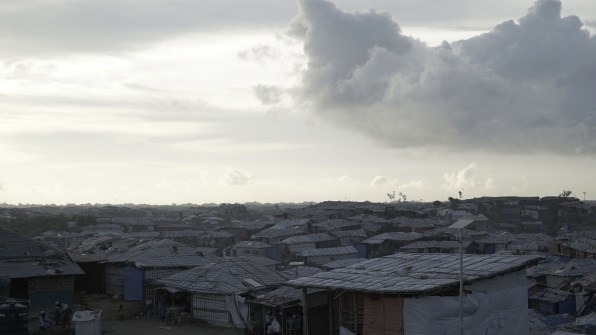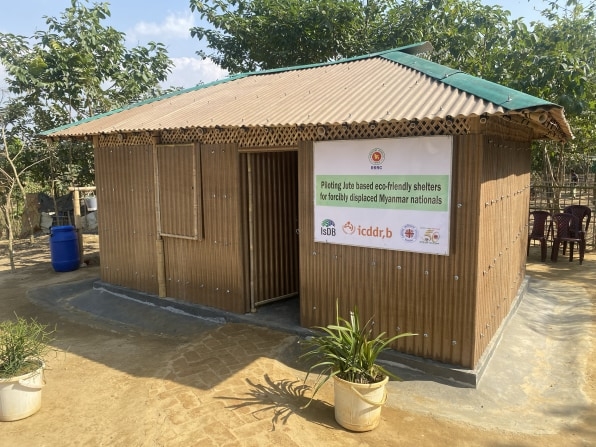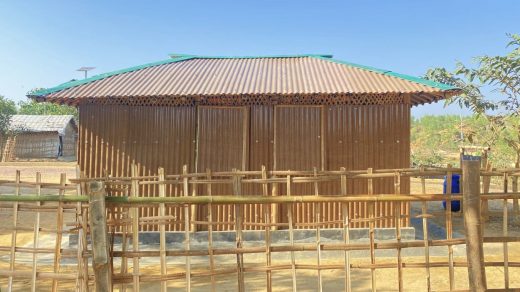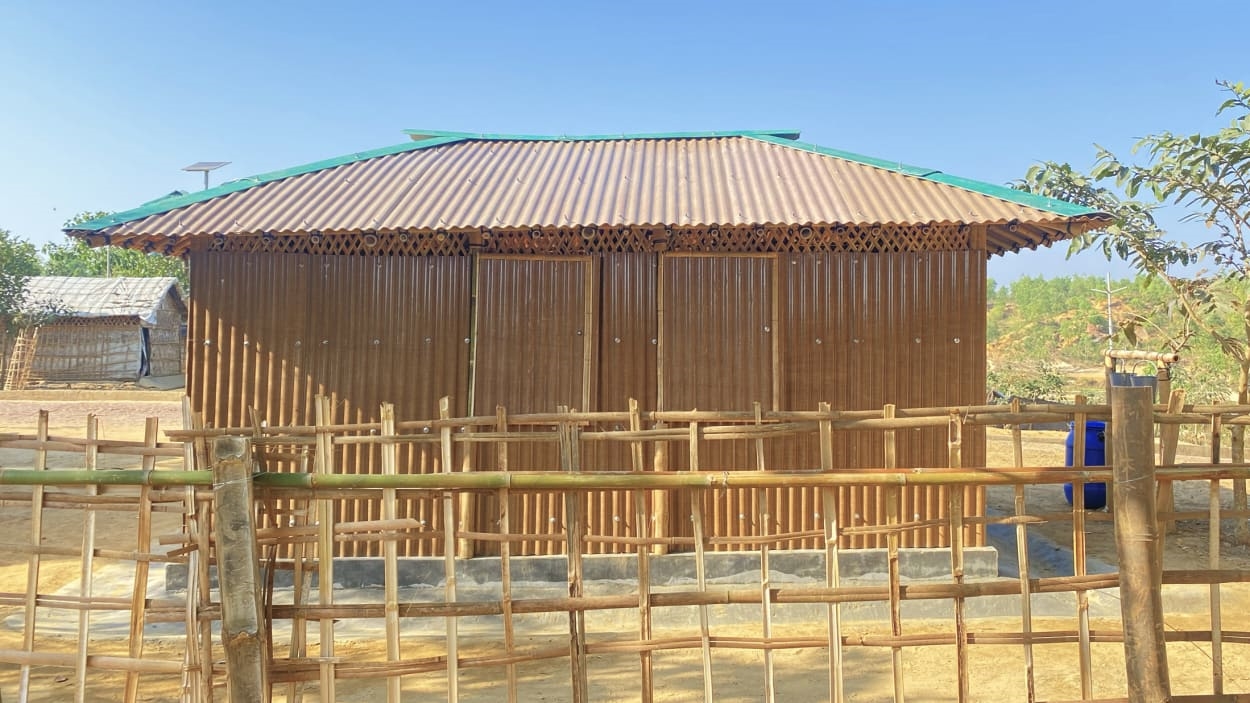These plant-based refugee shelters were made to survive typhoons
At refugee camps near the coast in Bangladesh, where hundreds of thousands of Rohingya refugees have fled because of persecution in Myanmar, most people live in shacks made of bamboo and tarps. But for the past year, a handful of families have been testing shelters constructed with an affordable new plant-based plastic that is made locally and lasts longer. When a typhoon hit the area last year, the new homes were undamaged, unlike other shacks nearby.

The material “is cheap and doesn’t require power to create, and doesn’t require specialized training or equipment, just a few chemicals that are common on the market,” says Alex Blum, CEO of Applied Bioplastics, the startup that produces it. “So you can create housing for millions very inexpensively, and in a way that is both environmentally friendly and dignified. We’re not talking about tents; we’re talking about homes.”
Blum traveled to Bangladesh to make a film about the refugee crisis, and while there he met a scientist who had been developing the material for more than two decades. The inventor, Mubarek Ahmad Khan, “is a chemist, not a businessman, and he was unable to commercialize the product himself,” Blum says, noting that he eventually convinced Khan to let Applied Bioplastics bring it to market.

The basic design is simple. A locally farmed plant called jute is woven into rough cloth, painted with a plastic resin, and set with heat in a mold that forms sturdy walls or roofs in about an hour. The material resists heat, making the homes significantly cooler than tents or shelters made from materials like tin. It’s strong enough to stand up to typhoon winds, and unlike a tarp, it can’t be easily cut by thieves or invaded by rats.
In theory, homes constructed with this material could last decades, though they can also be easily dismantled, moved, and rebuilt if a temporary camp has to close. The material can also be ground up and recycled into new plastic.
Growing the fiber, weaving it, and making walls and roofs can all be done locally, helping a struggling economy and potentially allaying some of the resentment that some residents feel toward the refugees. “Refugees are almost never dumped into the backyards of billionaires,” Blum says. “They’re typically moved in next to or on top of the already poor and disadvantaged. That’s true in Bangladesh.”
Building a 150-square-foot home, which can shelter a family of as many as 10 people, costs around $1,000. After a yearlong pilot test of six homes, along with the nonprofit Caritas and the health research organization International Centre for Diarrhoeal Disease Research, Applied Bioplastics is now in talks with the U.N. to potentially build more. Blum says his company isn’t trying to make a profit on the project. But the same basic technology can be used to make a lower-carbon, partially plant-based plastic called BioFi, which Blum is trying to market to plastics producers as its main product line.
(23)



